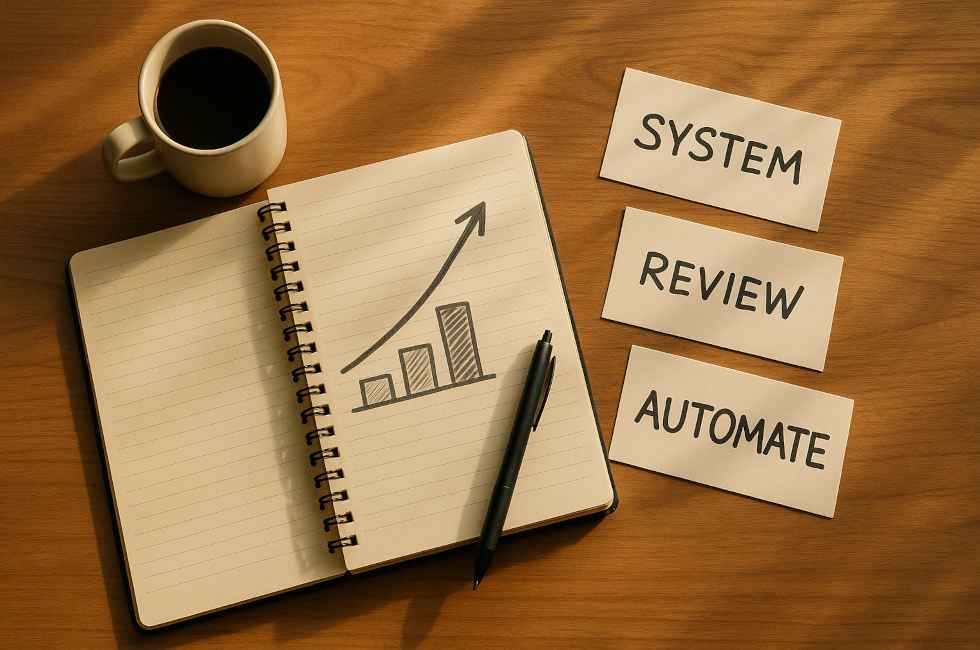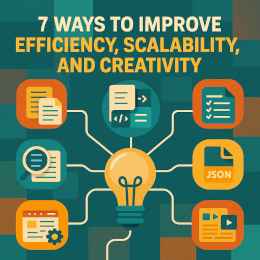1% Productivity Habits That Change Everything
Published 5 October 2025

Introduction
Big changes are exciting, but they rarely stick. I’ve learned that lasting productivity comes from small, consistent refinements, not heroic sprints. When I make a 1% improvement—streamlining a template, clarifying a checklist, logging a repeatable prompt—the immediate gain is tiny, but it compounds. After a month, my workload feels lighter; after a year, my entire workflow is different. The best part is the mental relief: each little system lowers my cognitive load so I can spend more time in creative flow and less time in decision fog.
This approach also plays nicely with modern tools. In 5 Fresh AI Trends Transforming Everyday Productivity I explore agentic workflows and background assistants that automate the grind. And in Evolving Landscape of Leadership: Adapting to the Age of AI I show why leaders who embrace small, systemic upgrades outperform. Even platform strategy can be simplified with focused properties—see 7 Ways Microsites Can Boost Efficiency, Scalability, and Creativity. Think small to grow big.
1. From Ad-Hoc to Automated
Early on, I treated every task like a creative improvisation. It felt exciting, but it also burned time. Then I started capturing repeatable moments — naming patterns, saving prompts, and scripting routines. When I noticed I was typing the same instruction to ChatGPT twice, I turned it into a reusable Prompt Library
file. When I found myself re-tagging images, I made a command-line template. These small automations don’t remove creativity — they protect it. Every process I systematise returns focus and cognitive bandwidth. I now think of automation as invisible scaffolding: it holds up the creative work so it can breathe and scale naturally. The more I document and automate, the more ideas I can chase without feeling overwhelmed.
Why: Systems remove friction and create dependable momentum.
Boost: Frees hours weekly by turning routine steps into background flow.
Next step: Identify one task you repeat weekly — script or template it today.
2. Think Metadata-First
The moment I started embedding metadata in everything — from photos to notes — my productivity jumped. Metadata is like a breadcrumb trail for your future self. When every file carries tags, dates, and context, searching becomes thinking in fast-forward. I now add a quick JSON block beside any output I make. It doesn’t have to be complex: just title, type, date, and 2-3 keywords. Over time, these tiny fragments create a powerful shadow index that connects ideas across projects. Whether you’re managing research, music files, or web assets, metadata turns chaos into clarity. It’s a habit that costs seconds today but saves hours tomorrow. Think of it as building your own personal search engine for life.
Why: Structured context makes your digital world searchable and future-proof.
Boost: Faster recall and cleaner organisation across all creative domains.
Next step: Create one metadata.json template and attach it to your next project.
3. Scale Creatively, Not Linearly
One idea should never live in one format. When I write a story, I now see three potential outputs: a blog post, a 60-second video, and a short AI narration. This is creative scaling — one spark, multiple forms. The key isn’t more work; it’s re-imagining assets. A single paragraph can become a voiceover script; an image caption can become a tweet thread. With each iteration, the idea gains reach, depth, and longevity. I often sketch a mini content tree: if the trunk is the idea, the branches are the mediums. This strategy compounds visibility without extra effort, and it encourages agile creativity — small pivots that test what resonates. The future of productivity isn’t doing more things; it’s multiplying the value of each thing you do.
Why: Expanding ideas across formats multiplies their audience and impact.
Boost: Increases creative output 3–5× without extra production time.
Next step: Take one idea today and produce it for two new mediums.
4. Schedule Reflection, Not Perfection
Perfection is a mirage; progress is measurable. The shift came when I stopped waiting to feel ready to refine. Instead, I blocked out a rshort review window each week. During that time, I review one piece of recent work through a clear lens — clarity, scalability, and longevity. This transforms reflection from guilt into growth. When review becomes rhythmic, you no longer dread it. You look forward to it because it closes feedback loops and reveals improvement over time. I even keep a small log of what I adjusted and why — a private changelog of personal growth. Over months, this process builds trust in your own process. You don’t chase perfect; you build better.
Why: Regular reviews compound skill and confidence through measured progress.
Boost: Sharper output, stronger voice, and less procrastination.
Next step: Schedule a 15-minute Weekly Review
event in your calendar.
5. Manage Cognitive Energy
Productivity isn’t just about time — it’s about attention. I used to fill every spare minute with minor tasks until I realised that mental residue was stealing focus from deep work. Now I manage my cognitive energy like a battery. High-focus mornings are for strategy, writing, or music. Afternoons are for admin, editing, or automation. I keep a brain buffer
list — a set of small, easy wins I can do when I’m mentally low. Separating high-focus and low-focus work means I’m never forcing the wrong task at the wrong time. When something feels repetitive, I automate it. When it feels chaotic, I template it. The result? Less fatigue, smoother flow, and better decisions. Protect your brain; it’s your most expensive resource.
Why: Energy, not time, is the true currency of performance.
Boost: Higher focus, fewer errors, and longer creative endurance.
Next step: Split your task list into High Focus
and Low Focus
zones today.
Conclusion
The 1% rule works because momentum compounds. Each tiny improvement removes a snag, clarifies a step, or saves a decision. You don’t need a sweeping overhaul or the latest guru system to feel real progress. Start by turning one repeated action into a checklist or prompt, add lightweight metadata so your work is searchable, and set a short weekly review to keep quality rising. Layer in only the automation that helps. After a few weeks you’ll notice space opening in your day; after a few months you’ll trust your systems; after a year you’ll feel calm, focused, and surprisingly prolific. Small moves, made consistently, change everything.
About the Author
Phil Reichert is passionate about implementing small productivity enhancements to improve creativity, efficiency, and scalability. He writes at PhilReichert.org, exploring how curiosity, technology, and systems thinking help modern polymaths thrive.



